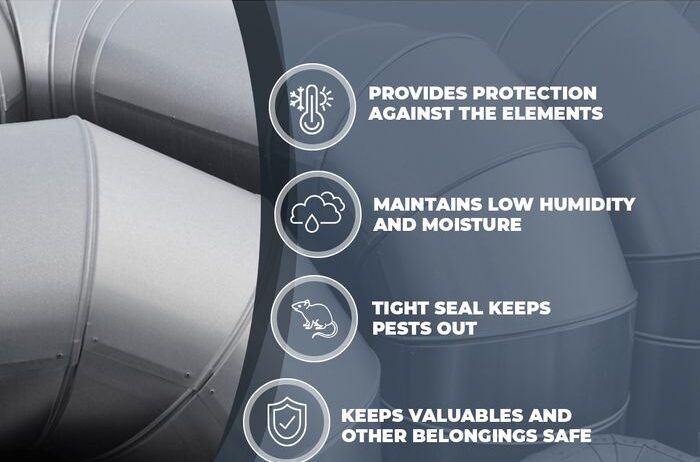The concept of climate-controlled storage can be likened to a protective cocoon for your treasured furniture, enveloping it in a stable microclimate that shields it from the ravages of time and the fickle nature of the environment. When one contemplates the intricacies of furniture preservation, the question arises: do you truly need climate-controlled storage for your furniture? The answer is not merely a matter of preference; it is a nuanced discussion interwoven with the elements of material science, environmental awareness, and personal investment.
Let us first examine the various types of furniture that might necessitate this specialized storage. Antique pieces, crafted from hardwood or upholstered in delicate fabrics, stand resilient against the test of time yet remain susceptible to temperature fluctuations and humidity. Wood, for instance, is a living entity that responds to its environment; it expands in the heat of summer and contracts during the harshness of winter. By storing antique furniture in a climate-controlled space, one mitigates the risk of warping, cracking, and other deformations that can arise from drastic climatic changes.
Moreover, fabrics present their own challenges. From silk to velvet, upholstery can suffer from mold and mildew in humid conditions or fade and dry out in excessive heat. A climate-controlled unit acts as a guardian, retaining the vibrancy of colors and the integrity of the materials. For instance, consider the plight of a family heirloom, perhaps a Victorian settee, which holds not just monetary value but also sentimental treasure. Would you let it languish in a damp garage, where the threat of rot lingers like a cloud? Certainly not. This brings the focus back to the essence of climate-controlled storage—protecting memories as much as materials.
Another compelling aspect of climate-controlled storage is its ability to provide a buffer against common environmental stressors. High humidity levels can lead to the growth of mold, transforming a cherished piece into a breeding ground for allergens and health concerns. Conversely, extremely dry conditions can pull moisture from the materials, resulting in threads that snag and surfaces that splinter. In utilizing climate-controlled storage, one is not merely preventing damage; one is ensuring that their investments remain as splendid as the day they were procured.
Furthermore, the allure of climate-controlled storage transcends the realm of practicality. It embodies a promise—the promise of longevity and preservation, encapsulating the essence of sustainable living. By investing in such spaces, one is committing to mindful stewardship of their possessions. This is particularly pertinent in an age where environmental consciousness is at the forefront of societal discussions. In choosing adequate storage solutions, there lies an implicit acknowledgment of the value of consumer goods, reinforcing the belief that every object has a story and deserves to be cherished.
Let us not overlook the type of environment that climate-controlled units provide. Unlike traditional storage spaces, which often resemble an abyss of uncertainty, climate-controlled facilities are akin to well-tended gardens, where each item is cared for methodically. They maintain a consistent temperature, typically between 55°F and 85°F, and humidity levels are kept between 30% and 50%, creating an oasis for the prized pieces that inhabit them. This is particularly crucial when one considers the collective anxiety that often accompanies significant life transitions—downsizing, relocation, or even the unexpected loss of a loved one. The act of placing belongings in a climate-controlled unit can offer solace, knowing that they are safeguarded from deterioration.
Yet, while the benefits are plentiful, one must also weigh the considerations that accompany choosing climate-controlled storage. The cost is typically higher than standard storage, presenting a potential hurdle for individuals merely seeking a temporary reprieve for their belongings. However, this expense can be viewed through a lens of value rather than mere cost. Consider the potential expenses associated with restoring a severely damaged piece of furniture—this may far exceed the investment in climate control. Thus, it becomes an exercise in intelligent economics over time.
Add to this the environmental implications; in an era where sustainability has become a clarion call, one must think critically about consumption patterns. An object that is lost to decay is not just a loss of material; it is a diminished resource that adds to the ongoing environmental quandary. By choosing climate-controlled storage, one not only protects personal investments but also contributes to an ethos of preservation for future generations.
In conclusion, the decision to utilize climate-controlled storage for furniture transcends its facade as a mere logistical solution and becomes a heartfelt consideration of how we value our possessions. It advocates for honoring the craftsmanship embedded in furniture, while also addressing the wider implications of environmental stewardship. Whether one chooses to safeguard an antique heirloom or modern furniture, the underlying principle remains steadfast: the pursuit of preservation is a noble endeavor, blossoming from the relentless passage of time in a world that often neglects the treasures residing within our homes.







